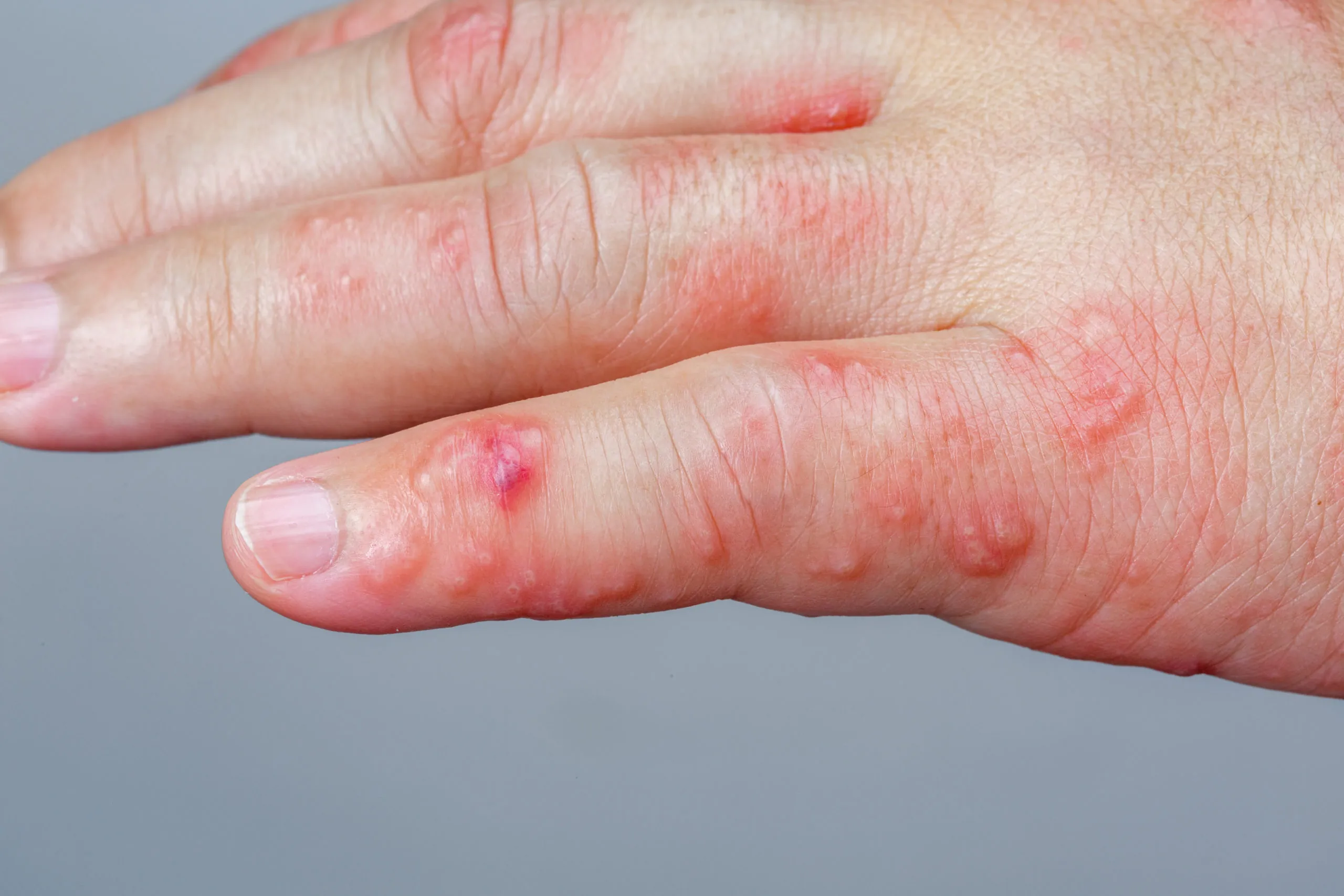If you’re searching for what are the symptoms of the new COVID variant, you’re not alone. With new strains emerging in 2025, understanding the latest signs and how they differ from older variants is essential to protect yourself and loved ones. This guide provides an in-depth, up-to-date overview of new COVID variant symptoms, compares them to traditional symptoms, and offers practical advice for managing risk this year.
Whether you’re a health-conscious individual, a concerned parent, or supporting older adults, this article will equip you with clear answers, evidence-backed insights, and actionable steps.
Understanding the New COVID Variant in 2025
New COVID variants—like NB.1.8.1 (“Nimbus”) and XFG (“Stratus”)—are rapidly spreading across several regions, including the US, UK, and India. These subvariants are descendants of Omicron, with subtle genetic tweaks that make them highly transmissible and sometimes capable of evading prior immunity.
Why Do Symptoms Change With Variants?
Variants can alter symptom profiles slightly due to mutations in the virus’s spike protein, which affects how the virus interacts with our immune system. Some symptoms might become more common, and unique signs may emerge. Knowing what are the symptoms of the new COVID variant enables early detection and swift action.
What Are the Symptoms of the New COVID Variant?
The hallmark COVID-19 symptoms are still present in most cases: cough, fever, fatigue, and loss of taste or smell. However, latest data on the new COVID variant points to certain symptoms being more prevalent or manifesting in distinct ways.
Most Common Symptoms in 2025
- Sore throat (often severe, described as “razor blade throat”)
- Runny or blocked nose
- Persistent dry cough
- Hoarseness or raspy voice (especially seen in the Stratus/XFG subvariant)
- Fever or chills (usually low-grade)
- Muscle aches and body pain
- Headache (mild to moderate)
- Fatigue or tiredness
- Shortness of breath (less common than previous waves, but possible)
- Gastrointestinal problems: nausea, appetite loss, diarrhea
Unusual or Variant-Specific Symptoms
- Severe sore throat (“razor blade throat”)—reported as a defining feature of the latest Nimbus (NB.1.8.1) variant.
- Hoarseness or voice changes—more common with Stratus (XFG) variant.
- Symptoms can overlap with allergies or the common cold, making them harder to distinguish at first.
Symptom Comparison – New Variant vs. Classic COVID
| Symptom Type | New Variant (2025) | Classic COVID-19 (2020-2022) |
|---|---|---|
| Sore throat | Very common, severe | Common, less severe |
| Runny/blocked nose | Very common | Sometimes |
| Dry cough | Frequent | Frequent |
| Loss of taste/smell | Rare | Common |
| Fever/chills | Moderate | Very common |
| Headaches | Moderate | Moderate |
| Hoarseness/raspy voice | Unique feature | Rare |
| Muscle aches | Frequent | Frequent |
| Shortness of breath | Occasional | Frequent in severe cases |
| GI issues | Sometimes | Sometimes |
How to Identify the New COVID Variant: Practical Examples
Example 1: The “Razor Blade Throat” Warning
Sarah, a 35-year-old teacher, noticed her sore throat felt especially sharp and painful—very different from a typical cold. Over the next two days, she developed congestion and a cough, but no fever. Suspecting COVID, she took a home test, which was positive. This type of “razor blade throat” is a top sign of the 2025 Nimbus variant.
Example 2: Hoarseness and Mild Flu Symptoms
James, age 40, felt hoarse with a raspy voice and mild body aches. He didn’t develop a classic fever or lose his sense of smell. Because his coworker tested positive for COVID with the Stratus (XFG) variant, he got tested and was positive as well. Hoarseness and a dry cough are more typical with this strain.
What Should You Do If You Have Symptoms?
Actionable Steps
- Test promptly: Don’t dismiss symptoms as just a common cold or allergies. Use a rapid COVID-19 test at home or seek PCR testing if available.
- Isolate: If positive or symptomatic, stay home and avoid contact with others to prevent spread, especially around vulnerable individuals.
- Monitor your health: Track your symptoms closely. If you develop chest pain, severe shortness of breath, confusion, or cannot eat/drink, seek urgent medical attention.
- Notify close contacts: Let people you’ve been around know if you test positive so they can watch for symptoms and test as needed.
Who Is at Highest Risk of Severe Illness From New COVID Variants?

Even with generally milder symptoms for most people, those at higher risk for severe COVID include:
- Adults over 65
- Individuals with weakened immune systems
- People with chronic health conditions (e.g., heart disease, diabetes)
- Pregnant or postpartum women
These groups should seek testing and medical advice as soon as possible if symptoms develop.
Does Vaccination or Prior Infection Alter Symptoms?
Vaccination, boosters, or prior infection can lead to milder or less typical symptoms—often more like a cold. However, current vaccines remain effective at preventing severe illness from new variants.
- Stay up to date with recommended vaccines, especially if over 65 or immunocompromised.
How to Reduce Your Risk of Catching or Spreading the New COVID Variant
Actionable Protection Tips
- Mask in crowded indoor spaces—especially if in high-risk settings or surges are reported locally.
- Ventilate rooms frequently with open windows or air purifiers.
- Wash hands regularly and avoid touching your face.
- Limit contact with sick individuals and practice social distancing where possible.
- Check local health updates regularly for new recommendations.
When to Seek Emergency Care
Immediately seek help if you experience:
- Severe shortness of breath
- Chest pain or persistent pressure
- Severe confusion or inability to wake up
- Blue-tinged lips or face
These symptoms could indicate severe COVID and need urgent medical attention.
How the Symptoms of the New COVID Variant Differ Across Various Age Groups
As the new COVID variant circulates in 2025, health professionals have noted that symptom manifestation can vary considerably based on age. Recognizing these distinctions is vital for both early detection and tailored care, especially among the most vulnerable populations.
Children and Adolescents
Children infected with the latest COVID variant often display more subtle or non-classic symptoms than adults. In many cases, their illness may first appear as what seems like a mild cold or allergy.
Most Common Symptoms in Children:
- Sore or scratchy throat
- Nasal congestion and runny nose
- Low-grade fever (often dismissed as “teething” in young children)
- Fatigue, sometimes presenting as irritability or lethargy
- Occasional mild cough
- Gastrointestinal symptoms are more frequent in kids: vomiting, tummy aches, diarrhea
Important distinctions:
While loss of taste and smell remains rare with the new variant, skin rashes (such as small, red blotches on fingers or toes, sometimes called “COVID toes”) have reappeared in some areas. Multisystem Inflammatory Syndrome in Children (MIS-C) is rare but still a concern; parents should watch for persistent fever, abdominal pain, vomiting, or rash and seek prompt medical advice if these develop.
Adults (18-64)
For healthy adults, the new variant frequently starts with a severe sore throat and runny nose, followed by fatigue and either a persistent dry cough or muscle aches. Many report moderate headaches and, less often, mild gastrointestinal issues. In this group, symptoms tend to resolve within 5–7 days but can be mistaken for seasonal allergies or the common cold.
Behavioral Tips:
- Early isolation is advised as adults are often the index case in family clusters, especially if working in office or service industries.
Older Adults and Immunocompromised Individuals
Subtle or Atypical Presentations:
- Confusion or worsening memory in seniors (“COVID delirium”)
- Sudden loss of appetite
- Low-energy without fever
- Worsening of existing medical conditions (heart failure, COPD) may be the first clue
- Lower rates of sore throat and nasal symptoms compared to younger adults
Consequences:
Mild symptoms in older adults can quickly progress to severe respiratory symptoms, chest pain, or shortness of breath within days, underlining the importance of low-threshold testing and rapid intervention.
Detailed Symptom Progression and Timeline for the New COVID Variant
Understanding how symptoms typically develop over time can help you differentiate COVID from other illnesses and make smarter decisions about care and isolation.
Symptom Onset (Days 1–3 After Exposure)
- Sudden onset of a sharp or severe sore throat
- Nasal congestion, runny nose begins
- Mild headache, generalized muscle aches
- Fatigue or sense of being “run down”
- Occasional low-grade fever
Notable: Many cases never develop a fever, especially in vaccinated individuals.
Peak Symptom Period (Days 4–7)
- Sore throat may peak—“razor blade” pain at its worst
- Cough becomes more persistent, dry, or tickly; rarely productive
- Hoarseness or raspy voice appears in some, especially with Stratus/XFG subvariant
- Fatigue continues, sometimes with poor sleep from nasal congestion or throat discomfort
- New GI symptoms may start: mild nausea, loss of appetite, loose stools
Resolution Phase (Days 7–14)
- Sore throat and congestion ease
- Cough may linger (post-viral cough), often dry and not contagious after day 10
- Residual fatigue (“post-viral tiredness”) is common and can last a week or more
- For most, full recovery is seen by the end of the second week
Possible Long COVID or Prolonged Symptoms
A minority may experience:
- Persistent cough or breathlessness
- Difficulty concentrating (“brain fog”)
- Ongoing fatigue
If symptoms are severe or last more than 3–4 weeks, consult a doctor for evaluation.
Subtle and Rare Symptoms: What to Watch For with the New COVID Variant

While the major symptoms are well known, clinicians are observing certain subtle or rare symptoms that can be important for early detection—especially in high-risk settings.
Eye and Sensory Issues
- Conjunctivitis: Red, itchy, or watery eyes may signal early infection, especially in children.
- Ear pain: A new, unexplained earache or muffled hearing can precede other symptoms.
Cardiac and Neurological Manifestations
- Palpitations or rapid heartbeat: Sometimes reported in otherwise healthy adults.
- Dizziness: Episodes of lightheadedness on standing have accompanied mild respiratory symptoms in some individuals.
Skin Manifestations
- Red or purple spots or rashes, especially on extremities (hands and feet)
- Urticaria (hives) and non-specific body rashes can occur in early or recovery phases
Atypical GI Symptoms
- Some adults report only mild GI upset—bloating, indigestion, or mild cramping—without respiratory symptoms, especially with the newer subvariants.
Rebound Phenomena
- Rare cases show symptoms resolve, then return (usually sore throat or cough) within 1–2 days after initial improvement.
Expert Guidance: Symptom Management and When to Seek Help
At-Home Symptom Relief
Most cases of the new COVID variant will be mild and manageable at home. Here’s how to alleviate common symptoms:
- Sore throat: Saltwater gargles, soothing lozenges, warm teas, and over-the-counter pain relief
- Congestion: Steam inhalation, saline nasal sprays, room humidifiers
- Cough: Honey (adults only—not for children under 1), cough drops, avoid irritant smoke and dust
- Fever/body aches: Acetaminophen or ibuprofen, rest, fluids
Monitor closely:
- Track temperature and oxygen saturation (with a fingertip pulse oximeter if available)
- Keep a written log of symptoms—note any sudden worsening
When to Seek Immediate Medical Advice
- Severe trouble breathing or shortness of breath at rest
- New chest pain, palpitations, or arrhythmia
- Confusion, fainting, unresponsiveness, or difficulty waking
- Inability to eat or drink, persistent vomiting
- Blue or pale lips/face, or steep drop in oxygen levels
Protecting Others If You Have Symptoms
- Isolate in a well-ventilated room; use a separate bathroom if possible
- Wear a high-quality mask when around others in the home
- Disinfect high-touch surfaces and wash hands frequently
- Alert close contacts, including employers or schools, for early testing
Special Considerations: Symptoms in Vaccinated Individuals, Reinfected Patients, and the Immunocompromised

Vaccinated or Previously Infected Individuals
- Symptoms are generally milder, shorter in duration, and more likely to resemble a mild cold
- Sore throat, congestion, and fatigue dominate—fever and loss of smell/taste are rare
- Fewer lower respiratory or severe systemic symptoms are seen
Repeated COVID Infections
- Each successive infection, especially with the new variant, tends to be milder in terms of lung involvement but may still cause marked throat pain or fatigue
- Risk of “Long COVID” remains, so monitor for lingering symptoms
Immunosuppressed Patients
- May present with subtle symptoms or develop complications (e.g., pneumonia) even if initial signs are mild or absent
- Lower threshold for testing and clinical evaluation is warranted for this group
FAQs: What Are the Symptoms of the New COVID Variant?

How long does it take for symptoms to appear?
Symptoms may begin 2–4 days after exposure, sometimes even sooner than before due to higher transmissibility of recent strains.
Can you get the new variant multiple times?
Yes, reinfections are possible, especially because these variants are better at evading immunity from past infections or vaccination.
Is a new loss of taste or smell still common?
Such symptoms are now less frequently reported with the latest strains but can still occur for some people.
Conclusion
Knowing what are the symptoms of the new COVID variant empowers you to spot the signs early, take useful precautions, and seek care as needed. Pay special attention to severe sore throat (“razor blade” pain), hoarseness, congestion, and persistent coughs—especially if you are at higher risk. Rapid testing, isolation, and following public health guidance remain crucial tools as new COVID variants circulate.
